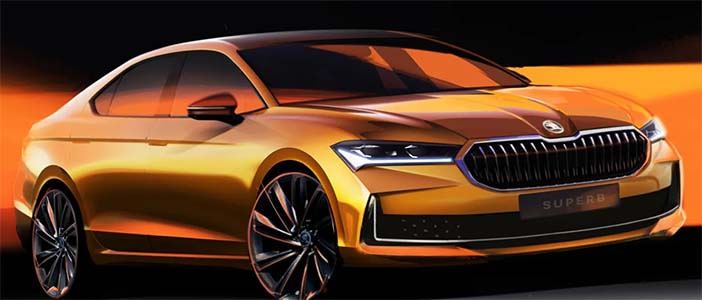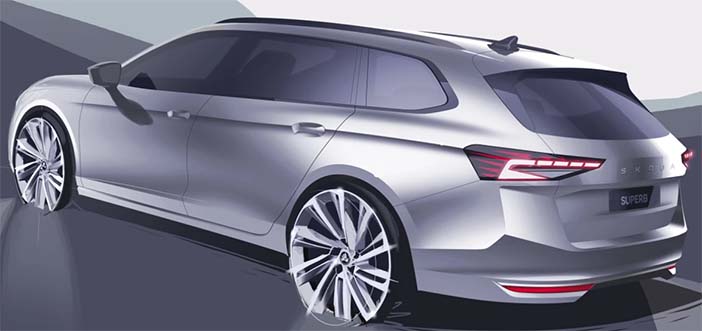+++ The IM LS6, a SUV-Coupe, has attracted over 10.000 orders in China within a week since its launch on October 12. IM is an all-electric brand under the state-owned Shanghai Automotive Industry Corporation (SAIC) and Alibaba. A firm order means the deposit is not refundable. The IM LS6 price range is 229.900 to 291.900 yuan (43.000 to 57.000 euro in the Netherlands) and the top trim level is Max Performance AWD with 787 hp and 800 Nm peak torque. The acceleration of 0-100 km/h is 3.5 seconds. A large 100 kWh battery provides 702 km of range under CLTC conditions. IM revealed that 31% of buyers ordered this top trim level version. IM also announced that 48% of buyers are owners of premium brands who purchased an additional car, while 32% of buyers bought a second car for family. Although IM didn’t explicitly say it, those data imply that LS6 was a first choice for 20% of buyers. The LS6 is underpinned by the iO Origin platform, the same as its sister model LS7. SAIC recently confirmed a partnership with AUDI , which is searching for an EV platform for its upcoming electric vehicles which it wants to sell in China. The iO Origin platform is most likely the one Audi will license from SAIC. And Audi is not alone. In July, Volkswagen revealed they bought Xpeng’s Edward platform that underpinned the old generation of G9 (a SUV) and will build 2 electric vehicles for the Chinese market. Xpeng launched a facelifted G9 in September. However, it is not based on Edward but on a new SEPA 2.0 platform. The LS6 was launched on October 12 and received about 25.000 blind orders. The deposit was refundable in that case. The dimensions are 4.904 x 1.988 x 1.669 mm and a wheelbase of 2.950 mm. Speaking of aerodynamics, the EV has a 0.237 Cd drag coefficient, which is not bad for an SUV. The inside of the car is powered by a self-developed IM OS 2.0 cabin system with a Linux kernel. IM also offers 2 versions of Tesla-like self-driving software: First is NOA for highways, which is available on highways connecting 333 Chinese cities. The second is NOA for urban and city driving, which starts public testing by the year-end. IM Motors was founded in November 2020 by SAIC, Zhangjiang Hi-Tech and Alibaba. It currently sells 3 cars in China: the IM L7 sedan, the IM LS7 SUV and the latest IM LS6 SUV Coupe. +++
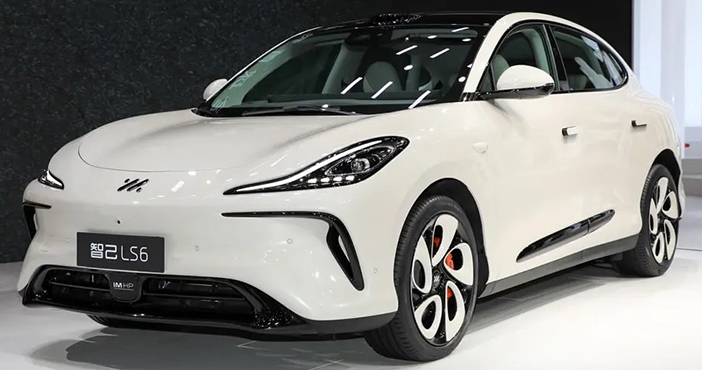
+++ A wide variety of vehicles, from a sleek crossover and an upscale autonomous minivan to a mini recreational car, all powered by batteries, will be among the eye-popping concepts at the Tokyo auto show this week when a record 475 companies participate in the event. The Japan Automobile Manufacturers Association, the event organizer, calls this year’s show (the first since 2019 following a pandemic-induced hiatus) the JAPAN MOBILITY SHOW to highlight a variety of advanced technologies beyond the auto industry, such as robots and drones. Japanese carmakers, seen as laggards in the all-electric vehicle market, are determined to play catch-up with overseas rivals such as Tesla. Among major EV makers, Chinese leader BYD will take part in the Tokyo auto show for the first time. The show will be open to the public until November 5th. Here is a glimpse of what Japan’s top-3 carmakers are featuring this year. Toyota displays the Kayoibako EV concept. The microvan with a panoramic glass roof allows owners to customize its interior for diverse purposes, ranging from outdoor recreation to delivery services and even as a food truck. The world’s largest carmaker will also exhibit a next-generation EV concept before its rollout in 2026 as part of its push in the battery-powered vehicle market to meet a goal of selling 1.5 million EVs in 2026. Honda, Japan’s No. 2 automaker, shows the CI-MEV. The 2-seater ultracompact EV, equipped with autonomous driving technology, is designed for customers in rural areas where few public transportation services are available. The Cruise Origin, a self-driving EV jointly developed with General Motors and its Cruise subsidiary, will also be on display. Honda, GM and Cruise plan to use the new vehicle for a driverless taxi service to be launched in Tokyo in 2026. At the Nissan booth, the Hyper Tourer, an all-electric luxury minivan, was unveiled. Designed to run on all-solid-state batteries, the fully autonomous driving vehicle is equipped with sensors to discern the driver’s feelings and physical state so it can control air conditioning and lighting automatically. The front seats can swivel 360 degrees to allow front and rear seat passengers to have face-to-face interactions while in self-driving mode.The automaker will also introduce the Hyper Punk, a concept EV designed to lure Generation Z customers. The crossover SUV features multifaceted and polygonal surfaces that change colors depending on the angle of viewers. It uses AI to convert the scenery around the car to manga-style imagery to show on the dashboard screen. +++
+++ LEXUS is planning on becoming an all-electric manufacturer by 2035 and helping the Japanese firm to reach that milestone will be a production version of its latest concept: the LF-ZL. Revealed alongside the LF-ZC saloon concept at the Japan Mobility Show, the LF-ZL stands for ‘Lexus Future Zero-emission Luxury’. According to Lexus, the LF-ZL presents a “luxury lifestyle” with a “distinctive driving experience”. The next-generation of Lexus EVs, like the LF-ZC and LF-ZL, will utilize new high-performance batteries from parent company Toyota, which will increase range, lower weight and improve overall performance. The brand has suggested that up to 620 miles from a single charge could be possible for EVs like the LF-ZL and LF-ZC, but we imagine this will decrease with the LF-ZL’s larger SUV body. In terms of size, the LF-ZL is larger than the current RX at 5.300 mm long, 2.020 mm wide and 1.700 mm tall; making it more of a rival for the upcoming Range Rover EV. The LF-ZL has a huge wheelbase of 3.350 mm, which helps open up the cabin to maximise space. There’s a sliding rear door and a front door that opens up 90 degrees to help make entry and exit as easy as possible. Inside the 4-seat LF-ZL is a pure concept car with ultra-thin seats, plenty of ambient lighting and futuristic technology. Lexus’ yoke-style steering wheel has a new look with the top angling away from the driver, while there are two small screens either side with the gear selector and infotainment displayed. In front of the passenger there’s a whopping screen that extends out into the middle of the dash. The LF-ZL makes use of Lexus’ next-generation of infotainment with Arene OS. It’s designed to record the driver’s preferences to offer a more personalized experience with route settings, information and general readouts. +++
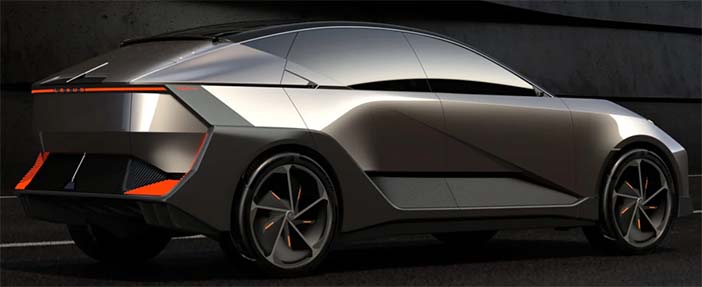
+++ MERCEDES has taken its time in testing AMG derivatives of the new CLE but we can expect the ’53’ and range-topping ’63 S E-Performance’ to be revealed soon ahead of an on-sale date in 2024. Now that the standard CLE has launched, the sporty versions should arrive soon to provide fresh competition for the likes of the BMW M4 Coupe and Audi RS 5 Coupe. Taking the place of the 2-door C-Class and E-Class models, the CLE has a big task on its hands. It’s designed to bridge the gap between those 2 cars in terms of size, pricing and technology. I’ve already got a good idea as to how the CLE will look in its hottest ’63’ form. Compared to the standard car we’ll see wider wheel haunches housing a larger, bespoke set of wheels with a beefier brake setup behind. To the front there will be the same Panamerica grille but with a special AMG insert. The lower part of the front bumper will be revised to add extra cooling to the engine bay and give the AMG model a more aggressive look. A core design trait of full-fat AMG models is the quad-tip exhaust layout, visible on this test car we’ve spotted. There could also be a new rear light signature and on the bootlid we can see a small lip spoiler has been formed. The CLE sits on the same MRA2 platform as the C-Class and E-Class and while Mercedes has said its larger models (like the E 63) will still get V8 power in future, smaller models (like the new C 63) have gone down the route of hybridization with a 4-cylinder. Given the CLE’s engine layout thus far consists of the same choice as in the C-Class, I expect the ’63’ to gain the C 63 S E-Performance’s turbocharged 2.0-litre 4-cylinder which is mated to a 6.1 kWh battery for a total output of 680 hp and 1.020 Nm of torque. The Mercedes-AMG C 63 S E-Performance can accelerate from 0-100 kph in 3.4 seconds but I suspect the CLE coupe could be even faster with less weight to haul around. Rather than go down the route of the new E-Class’ interior with the optional ‘Superscreen’ dash layout, the CLE borrows plenty of elements from the C-Class. Inside the ’63’, I expect the same overall cabin at the standard CLE, but with the typical AMG garnish of sportier bucket seats, an AMG steering wheel and of course some extra performance-focused driving modes. +++
+++ NIO has surpassed the 2.000 swap station milestone. The company operates 1.975 swap stations in China and 27 in Europe, bringing the total number to 2002 as of today. The Hefei-based EV maker is getting faster: The first 1.000 took Nio 4 years and adding the second 1.000 took them 1 year and 3 months. The first Power Swap Station (PSS), as Nio calls it, was built in Shenzhen in May 2018. The PSS number #1000 then went into operation in July 2022. Today, Nio celebrates PSS #2000 going live and 30 million conducted battery swaps, which it reached last week. As Nio is expanding to Europe, the first swap station landed on the Old Continent almost 2 years ago, in January 2022, in Norway. Nio planned to have 120 PSS in Europe by the year-end, but this goal was later reiterated to 80 PSS. Nio has 27 swap stations in Europe and, as of today. However, battery swapping and the BaaS (battery-as-a-service) model are new to European customers, and some even report confusion. Nio offers 2 options for using its vehicles in Europe: standard purchase and subscription. The subscription is mainly seen as a leasing alternative favored primarily by business customers. If you choose the buyout option, you have 2 choices again: you can purchase it with a battery or opt-in for a BaaS, meaning you don’t own the battery and only pay a monthly fee for the renting. However, if you purchase a car with a battery, you are not eligible for BaaS. In other words, you can’t use battery swap stations and can only charge your vehicle like everybody else. Nio currently installs the Power Swap Station 3.0 with 2 lidars, which can store 21 batteries and perform swaps in about 3 minutes. Nio also strives to license its swap technology to other automakers. In December last year, Nio’s President Qin Lihong claimed that their technology is open to anyone. No other automaker has yet reported partnering with a Hefei-base automaker on swapping tech. However, in China, Nio is not alone. There are more players in the battery swap business. They are far behind Nio in the number of battery swap stations and offer their services mainly to ride-hailing businesses or taxis. Let’s have a look at the 3 most prominent. In September 2021, Geely Group reported they aim to have 5.000 battery swap stations for electric vehicles globally by 2025. Geely Group has 2 brands producing EVs with battery swap functions: Cao Cao Auto and Livan. Cao Cao is a ride-hailing service like Uber, and Cao Cao Auto makes cars for their drivers. The latest model is Cao Cao 60, which is a pretty good car for cab drivers. Unfortunately it got into the headlines for dropping its battery pack while driving. And second, Geely’s swappable brand is also not sleeping. Last month, in September, they launched Livan 7, an electric car with lidar and a swappable battery for 117.700 to 173.700 yuan (22.000 tot 32.000 euro in the Netherlands), the cheapest electric passenger vehicle with lidar globally. In April 2022, battery giant CATL launched its first battery swap station under the Evogo brand in Xiamen. It used Swappable Electric Block (SEB) technology, also called Choco-SEB. The battery modules were structured into 48 Coco-SEBs to be easily swapped when needed. Bestume NAT from the state-owned FAW Group was the only compatible vehicle. Last, GAC Aion plans to have 500 swap stations by 2025 in China. It has already built the first 14 swap stations in Guangzhou in August. GAC Aion is an electric brand under the state-owned Guangzhou Auto (GAC) that recently got into the headlines thanks to its Hyper SSR 1.207 HP beast, the first Chinese mass-produced electric supercar. The only EV under Aion’s umbrella that supports battery swap is Hyper GT, which launched in China in July. The car offers five versions, and one of them is equipped with a swappable battery. Like in Nio’s case, customers buy the car without a battery and opt-in for BaaS. +++
+++ It looks like ‘Godzilla’ might be making a comeback, as NISSAN ’s new Hyper Force Concept unveiled at the Tokyo Motor Show provides us with our first glimpse of what could become the next-generation GT-R. The last edition (R35) was renowned for its remarkable acceleration and all-wheel drive traction, but Nissan’s “vision for a next-generation all-electric high-performance supercar EV” turns things up to 11. The Hyper Force Concept produces up to 1.360 hp (double that of a GT-R Nismo) and features an advanced version of the Japanese brand’s e-4Orce all-wheel control technology. Nissan’s Ariya is available with e-4orce in the form of a dual-motor powertrain, although I expect the Hyper Force could be packing 3 motors, or potentially even a 4-motor setup with the amount of power it’s got on tap. The Hyper Force Concept also features an all-solid-state battery (ASSB), which are lighter, more energy dense and can be charged faster than their lithium-ion counterparts. Nissan hopes to launch its first EV with this technology by 2028. The last Nissan GT-R was not a particularly subtle car, but the Hyper Force Concept throws caution to the wind with a front splitter that looks like it could double as a snow plough, and razor sharp bodylines around the rear haunches. The steeply raked windscreen and roofline are very similar to the previous GT-R’s, as are the circular tail-lights. The gigantic rear spoiler and diffuser are unique, however. The outrageous looks are good for more than grabbing people’s attention. The design was developed with the help of Nissan’s Nismo racing team to generate high downforce. And to offset the heft of the electric powertrain, Nissan has used high-strength carbon for the bodywork and wheels. The interior is just as extravagant as the exterior, featuring an F1-style steering wheel surrounded by four satellite displays, huge swathes of ambient lighting and carbon fibre bucket seats with four-point seat belts that supposedly allow for “comfortable long-distance driving”. The Hyper Force features 2 drive modes: R for ‘racing’ and GT for ‘grand touring’, each of which changes the interior lighting, as well as position and information on the displays around the steering wheel. In GT modes the screens are paired together and can be used to adjust the air conditioning, media and suspension settings, while switching to R mode sees the displays separate and move closer to the wheel so the driver can see information like tyre temperature, air pressure, brake rotor temperature and power distribution more easily. The car’s graphics have been designed by Polyphony Digital Inc – the makers of the PlayStation game Gran Turismo. The Hyper Force is 1 of 5 concepts Nissan has revealed over the past few weeks in the build up to the 2023 Tokyo Motor Show. The others include the Hyper Punk and Hyper Urban crossovers, Hyper Adventure SUV and the Hyper Tourer MPV. +++
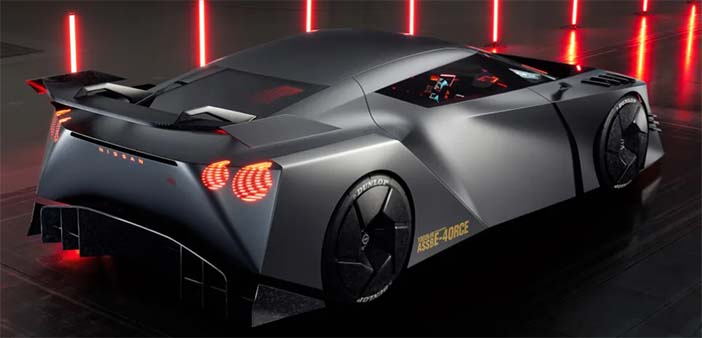
+++ OPEL ’s sporty OPC sub-brand may have been quietly axed in 2017, but the British firm is now building a range of performance models under the GSe moniker. And the next will be a Corsa. The GSe badge stood for ‘Grand Sport einspritzung’, which translates from German as ‘Grand Sport injection’, when it featured on the Commodore GS/E and Monza GSE back in the seventies and eighties. But it’s now it stands for ‘Grand Sport electric’. The Corsa will be the manufacturer’s first pure-electric GSe model, following in the tracks of the plug-in hybrid Astra GSe and Grandland GSe models. Both of these cars combine a turbocharged petrol engine with electric motors, for an output of up to 225 or 300 hp. In line with its GSe siblings, the hot Corsa is expected to feature unique wheels and plenty of gloss-black detailing. While the Astra GSe uses contrasting paint to separate it from lesser models in the range, there’s a chance the Corsa GSe may feature individual bumper inserts, as well as a contrasting roof. As with the Astra, I understand Opel will resist fitting the Corsa GSe with a more powerful motor for extra straight-line speed. The car is expected to use the larger 54 kWh battery found in higher-spec versions of the recently facelifted Corsa Electric, sending 156 hp through the front wheels for a 0-100 kph time of around 8 seconds. But stiffer springs, a lower ride height and recalibrated steering could be on the cards, helping to justify the GSe’s expected higher price tag. Given that the Corsa Electric currently costs 37.999 euro in the Netherlands in flagship GS Long Range guise, the GSe hot hatch could feasibly push beyond the €40.000 mark when it hits the road in 2024. Rivals for the Opel will include the Abarth 500e, the larger Cupra Born and MG4 XPower, as well as the hotly anticipated Mini Cooper. +++
+++ The electric car world is moving quickly with more efficient batteries allowing for greater range and performance, and not wanting to be left by the wayside, PORSCHE is almost ready to reveal a mid-life update for its all-electric Taycan. Since its launch in 2019 we’ve seen new rivals emerge to challenge the Taycan, including the revised Tesla Model S, Mercedes EQE, all-new Lotus Emeya and the impressive Lucid Air. To keep up with this strong competition we should see the Taycan feature a modified powertrain. The current range of trim levels are likely to continue, with an entry-level Taycan, 4S, GTS, Turbo and range-topping Turbo S. The base Taycan should come with a 79.2 kWh battery, while the faster, more expensive models will feature a 93.4 kWh unit. Porsche may well tweak the cooling and overall efficiency of the batteries to increase range, especially the mileage lost during cold weather. The most recent upgrade saw the Turbo 4S go from 460 km to a maximum 510 km, so Porsche has already demonstrated how it can extract more range from the model, although this is still some way off the Mercedes EQE which can cover up to 600km from a single charge. The front end will receive a host of subtle tweaks with a slightly reshaped quad-headlight cluster that sits more inline with the bonnet’s leading edge, while more obvious changes are the reshaped air intakes which should help to provide a better drag coefficient than the 0.22 Cd of the current car. Down the side the vertical vent behind the front wheel remains, and as we look to the rear there are additional vents below the light bar. The lower section of the diffuser has become more prominent, too. A new set of alloy-wheel choices are expected to be added with the facelift. I’ve also spotted a new range-topping version of the Taycan, with a triple-motor set-up and performance-focused aerodynamic tweaks, as a rival to the Tesla Model S Plaid. I believe this model will appear alongside the facelifted Taycan in 2024. +++
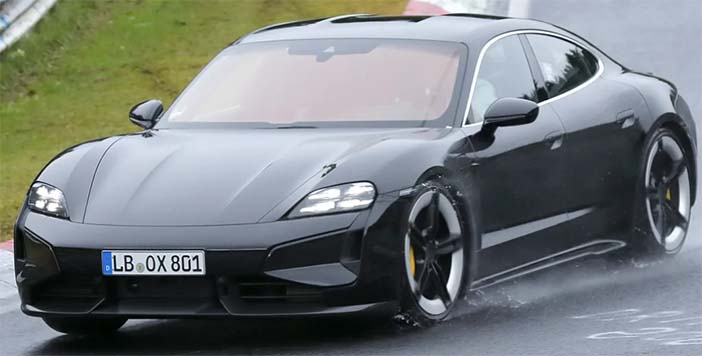
+++ The world premiere of the all-new Superb is set for 2 November, but before SKODA takes the covers off its next-generation family car, I’ve got new sketches to give us our best look yet. I’ve already driven the Superb in prototype form and came away very impressed by it. Now, we can piece together how the new car will look in both of its bodystyles (Combi and liftback). Skoda’s decision to offer the Superb in both of these forms gives it a wider appeal than the closely related new Passat, which is only available as an estate. I expect the Superb to go on sale in early 2024, joining the recently unveiled second-generation Kodiaq. The Superb will also borrow plenty of technology and design from its flagship SUV sibling so we already have a pretty good idea what to expect when the full unveiling takes place. These new sketches show how the liftback and Combi will look. Skoda calls its design language ‘Modern Solid’ for the new Superb, showcasing sharp, angular surfacing and a wide stance. Besides the extra mass of the estate’s rear, both Superb models feature the same design. The new Superb sits on a revised version of the MQB evo platform and Skoda proudly states that it was tasked with the development of the chassis, which was borrowed by Volkswagen for the new Passat. There’s a slight increase in length and wheelbase, unlocking even more space in the already cavernous interior. Boot space has even gone up from 660 to 690 litres in the Superb Combi; identical to its VW sibling. There will be no pure-electric Superb in this generation, instead, we’ll see the Volkswagen Group’s latest generation of combustion engines. While the popularity of diesel has waned, there’s still a choice of 2 options, with either 150 hp or 195 hp. Petrol power is offered in 3 forms. For the first time there’s a mild-hybrid option: a 1.5-litre TSI with 150 hp. A 2.0-litre turbocharged unit comes with either 204 hp or 265 hp and there’s a 1.5-litre TSI petrol mated to a 25.7 kWh battery in the plug-in hybrid version. Skoda says the extra battery size will enable a pure-electric range of over 100 km, increasing from the old PHEV’s 70 km maximum. +++
